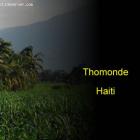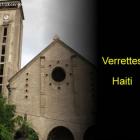ADVERTISEMENT
History - Haiti Observer Blog
History, Haiti Observer Blog. Read the following articles about History
Eske Haiti Jam Gin lide Nan Nivo Nelson Mandela?
Eske nou panse si nou te ginyin yon lidè tankou Nelson Mandela nou pap kote nou ye la konyè-a? Mandela was a figure of enormous moral influence, a symbol of revolution, resistance and triumph. Also he was a man of great vision for his country of South Africa.
This man is responsible for moving his country from a period of apartheid and injustice to a more just society.
Yon sel moun yo rele Nelson "Rolihlahla" Mandela fè changeman sa nan peyi li
Eske nou panse nou gin moun an Ayiti Ki kapab Fè Yon Bagay Konsa?
Battle of Vertieres, Day Day for Demonstration has arrived
Today, November 18, 2013 marks the Battle of Vertières near Cap-Haitian which is considered as the last major battle for Haiti Independence. If my predictions hold, today is expected to be filled with street protestation against the government of Michel Martelly
Pwal Gin Kouri nan Payi Sa Jodia!
Public protest is scheduled to take place in Port-au-Prince, Cap-Haitian and some major other cities throughout the country. Some will be demonstrating for and some against the Martelly Government.
What about the latest rumors out there?
On the one side, I heard that the protest will be going to Petion-Ville once again as Dessalines is trying to meet Petion. On the other side, the supporters of the government accused the opposition for accepting money from the Dominican Republic to finance the protest .
Vertierre or Vertieres, Pivotal in Haiti Independence
Saint Domingue on island of Hispaniola was once the most lucrative part of French colony on the Caribbean island from 1659 to 1809. But a slave revolt in which the battle of Vertierre or Vertieres was pivotal ended the colonization. With support of British government ended the French rule in Saint Domingue and the French were forced to withdraw themselves from this European colony in 1803.
The decisive encounter between General Rochambeau of the French army and the separatist British supported leader General Jean-Jacques Dessalines is known as 'War of Vertières'. General Dessalines who was born as a slave led the struggle against the French. The British weakened the French by naval blockades and supplied weapons and ammunitions to General Dessalines. Sensing danger, Rochambeau shifted French headquarters from Port-au-Prince to Cap Français. Dessalines went on capturing places one after another like Jacmel, Cayes, Jérémie and Léogane. When the French Commander surrendered himself on October 3 at Port-au-Prince, stage for physical attack was set on Le Cap Français.
The "Ark of Return" a Masterpiece of Remembrance and Triumph
A United Nations international panel of five judges picked Haitian-American Rodney Leon's modernistic and abstract sculpture as the winning art piece that will be installed near the United Nations Plaza in Manhattan in fall of 2014. Titled "The Ark of Return", it is a stunning representation of a slave ship, which will be hewn in immaculate white marble.
Len, a gifted designer and architect, also has another sculpture piece on display in lower Manhattan, the African Burial Ground National Monument. Leon, during his project presentation, educated the judges on the symbolic intent of the ark. In essence, he said the piece invites the viewer to explore it interiorly and exteriorly, a place of meditative thought and reflection, as part of an educational and transformative experience. It is meant to be a conduit to remembering the past without the shackles of shame attached to it.
Francois Makandal or "Macandal" a Maroon Leader
In 1750s, free mulattoes and blacks starts to amass power and wealth. Many secure plantations, particularly coffee plantations in the South and the West. In 1759, there is Makandal Conspiracy. Francois Macandal, a maroon leader, conspires a plot that is to spread to all corners of the colony of poisoning the whites in the North. It all begins in the North, with the vast network of Makandal collaborators, particularly trusted domestic workers, starting to poison the households of their masters, including those slaves who cannot be trusted. There is a frantic search by the whites on the nature and cause of the illnesses and death. A female slave is interrogated, and she betrays the rebel leader. A massive manhunt is launched by the planters.
The 222nd anniversary of the Ceremony Bois Caiman
The Haitian community is preparing for the 222nd anniversary of the Bois Caiman Ceremony. The ceremony is celebrated to mark a remarkable event which gave birth to the first ever black republic in the world. Bois Caiman Ceremony first celebrated on the 14th day of August 1791 remains a symbolic event in the history of humanity.
In reminder to the Haitian people Lesly Condé expressed his expectation for good participation from the Haitian Community during this important event. Lesly is the Consul General of the Republic of Haiti in Chicago.
The city of Cap-Haitian and its long History
Columbus' Santa Maria ran into a coral reef in 1492 and still, supposedly, lays there today, as much a ruin as the once-great city that was Cap Haitian.
The Spanish crew ultimately decided to settle in Santo Domingo in what is now the Dominican Republic, leaving Cap Haitian to the pirates who would influence its first name, Cabo Francés. The French revolution would inspire one in Haiti as well, as the 'freedom and liberty' so valiantly touted by the French masters about the French in France told of an unbearable hypocrisy to the African-descended slaves in Haiti. A 13 year war began and ended near Cabo Francés, with the resulting independence of the enslaved and the country of Haiti. Proudly, they renamed the cape Cap-Haitien after naming their country Haiti, considering it, the site of the most important struggles, the birthplace of their independence.
The Ruins of Fort Picolet near Cap-Haitian
In 1736, Mr. Larnage began the construction on Fort Picolet as a means of maintaining France's stronghold on the Haitian colony. With the Spanish realm so close at hand in neighboring Dominican Republic, the fort to the west of Cap-Haitien was an important means of keeping the French realm intact against the threat of invaders. When construction finished in 1741, the fort was a grey profusion, sticking out from the side of a rocky promontory, with walls seemingly un-scalable for their height and the danger they presented hanging over the cliff's edge and being out into sea. Atop their walls was a phalanx of cannons, trained and ready for any impending attack, and the steep steps, descending dangerously in most points were a further deterrent to those who would seek invasion.
Charlemagne Peralte Inspired a New Revolution in Haiti
Charlemagne Masséna Peralte was one of the greatest heroes of Haiti. Born in 1886, Peralte was a popular Haitian Nationalist leader who strictly opposed the invasion of Haiti in 1915 by United States. He led the guerrilla fighters called Cacos and presented a tremendous challenge to the invading US forces. Because of this retaliation, US had to severely upgrade its presence in Haiti.
Charlemagne Masséna Peralte was born in a city called Hinche. He was born to a family which had previously migrated from an area which currently falls within the borders of Dominican Republic. Peralte is respected both in Haiti and Dominican Republic. On his birth certificate, his name is registered as François Borgia Charlemagne Peralte.
Fort des Oliviers, Saint-Louis du Sud
With the Ministry of Tourism and its minister, Stephanie B. Villedrouin, along with the Martelly administration pushing to rebrand Haiti as a tourist destination, speculation is rife as to why certain untapped spots remain out of the running for the spate of planned rejuvenations set to revive many a local, historic and beatific locale. One such place is Fort des Oliviers.
The 18th century fort, built by the French in their struggle against the English, lies upstream of Saint-Louis du Sud's bay and has recently been said to be 'history hiding in plain sight.' Apart from the natural beauty of the area, Fort des Oliviers has over 128 km2 of sights of historical importance. Yet, despite its manifold attractions and its small number of inhabitants, 76,000 last told, the site remains overlooked, undeveloped and wholly neglected by the powers that be.
Our objective is to share with you news and information about Haiti and the people of Haiti. Traditions, habits and the way we were or grew are alive in this site. We highly recommend that you Subscribe to our Newsletter and also share with us some of the things that are memorable and made us unique people.

 Thomonde, Haiti
Thomonde, Haiti  Verrettes, Haiti
Verrettes, Haiti  Life After Death
Life After Death  Haitians are a Proud People
Haitians are a Proud People  Something to think about
Something to think about